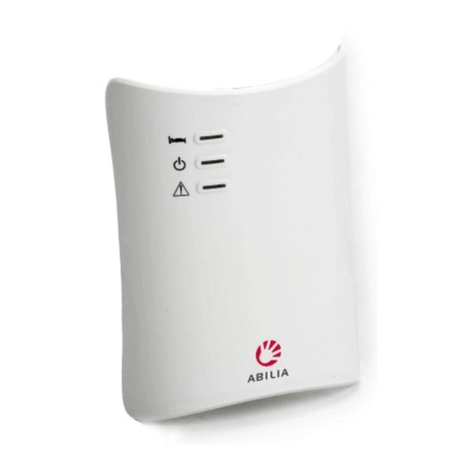1918
Changing batteries
Check battery performance regularly on all units to ensure that the system
is fully functional. Please note that rechargeable NiMH batteries should be
replaced approx. every 2 years. Always keep batteries out of reach of children.
Dispose of batteries according to your local environmental laws and guidelines.
Replacing batteries in the transmitter
Open the cover of the transmitter. Remove the old batter-
ies and replace with new ones. Instructions are above the
battery compartment.
Important! If the transmitter is battery powered,
use alkaline AAA batteries only. If the transmitter
is mains powered, use rechargeable NiMH AAA
batteries only. NEVER mix NiHM batteries with alkaline
batteries as the batteries and charger can overheat.
Replacing batteries in the pager
Open the battery cover on the back of the pager. Remove
the old battery and replace with a new one, see the
instructions in the battery compartment.
Important! Only rechargeable NiMH AAA
batteries shall be used in the pager.
Replacing batteries in the pager charger
Open the battery cover under the pager charger. Remove
the old batteries and replace with new ones. Instructions
are in the battery compartment.
Important! Only rechargeable NiMH AAA
batteries shall be used in the pager charger.
Chapter 3 Maintenance. Chapter 3 Maintenance.
System test
It is important that system function is checked at least once a week. Perform
a full system test to include activating all sensors and test all transmitter
alarm functions.
Important!
More frequent test intervals can be required if specied by the sensor
user manual.
More frequent test intervals may be required in special circumstances, if
the system conguration is modied or if any of the units are dropped.
Handling and cleaning
Warning! Failure to follow the instructions for handling and cleaning
can damage the products and void the warranty.
Using jacks and outlets
Always check that the jack ts the connector and that it is correctly aligned.
Never force a jack into a connector. If it is dicult to plug in the jack, check
that the connector is not blocked in any way and make sure that you are
plugging it into the right connector.
Using the products
Do not use or store the products near a source of heat. Only use in dry
environments when the temperature is between 15°-35° C. Do not use
the pager in the bath or shower. If the pager or transmitter gets wet or is
exposed to moisture, it should no longer be regarded as reliable and should
be replaced. If you do not plan to use the product for an extended period,
remove the batteries.
Cleaning
Before cleaning the product, disconnect it from any power source. Use a
soft, lint-free cloth. Avoid any moisture getting into the openings. Never use
window cleaner, detergents, sprays, solvents, alcohol, ammonia or products
that contain abrasives.
Guarantee and service
If the product is either damaged or out of order, follow the instructions in
the user manual. If the product continues to function incorrectly, contact
your local dealer for details on guarantee cover and service.
Other important information
Information on how to dispose of the product and other important
information on instructions and safety can be found in the section on
Important information on p. 28-29.
© and TM 2015 Bellman & Symfon AB. All rights reserved. Bellman and Bellman & Symfon
are registered trade marks owned by Bellman & Symfon AB.
EN




























